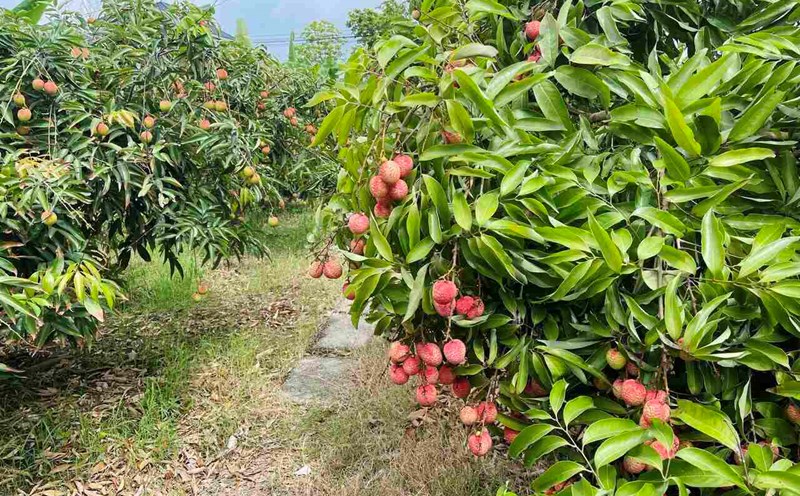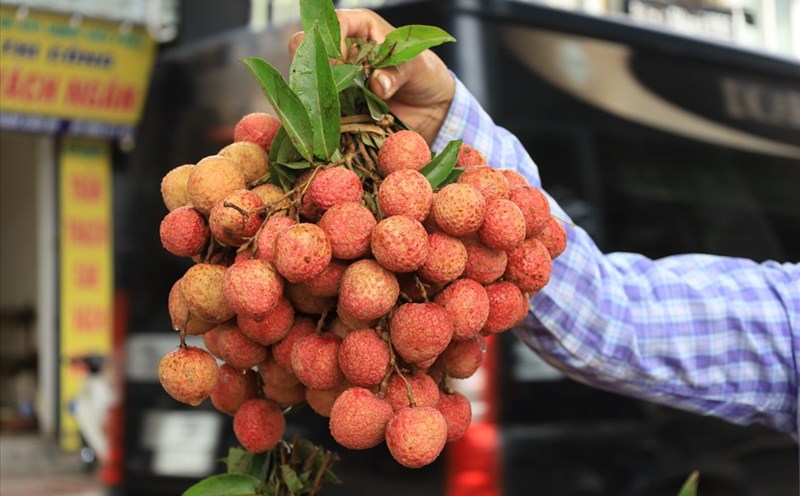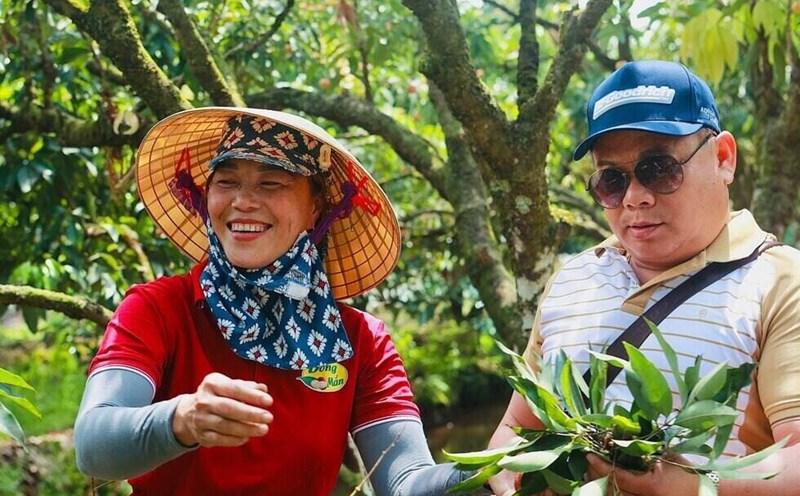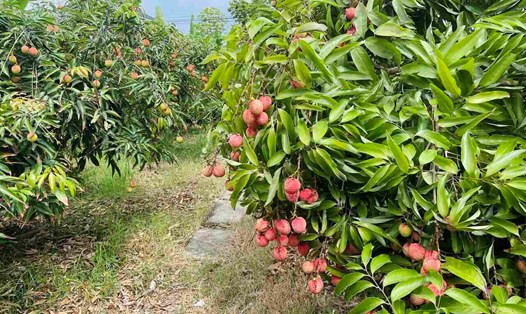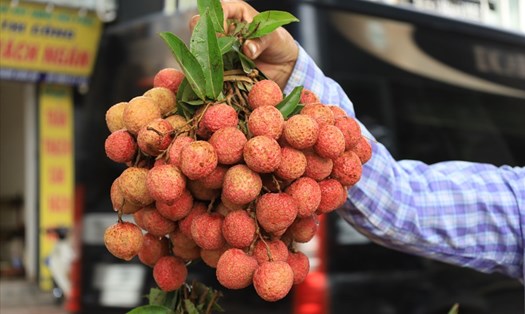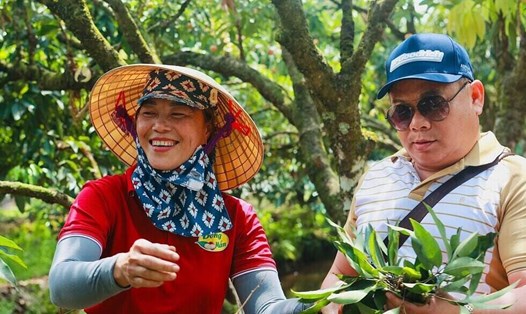When mentioning fabric, people often mention dishes, drinks, or arranging bottles into flowers... For Viet Ut - a young man passionate about Vietnamese calligraphy, fabric is the material that creates unique calligraphy works.
After posting a calligraphy photo series on the lyrical fabric on social media, the bottom of his post quickly received thousands of likes and many comments from the online community expressing surprise and excitement.
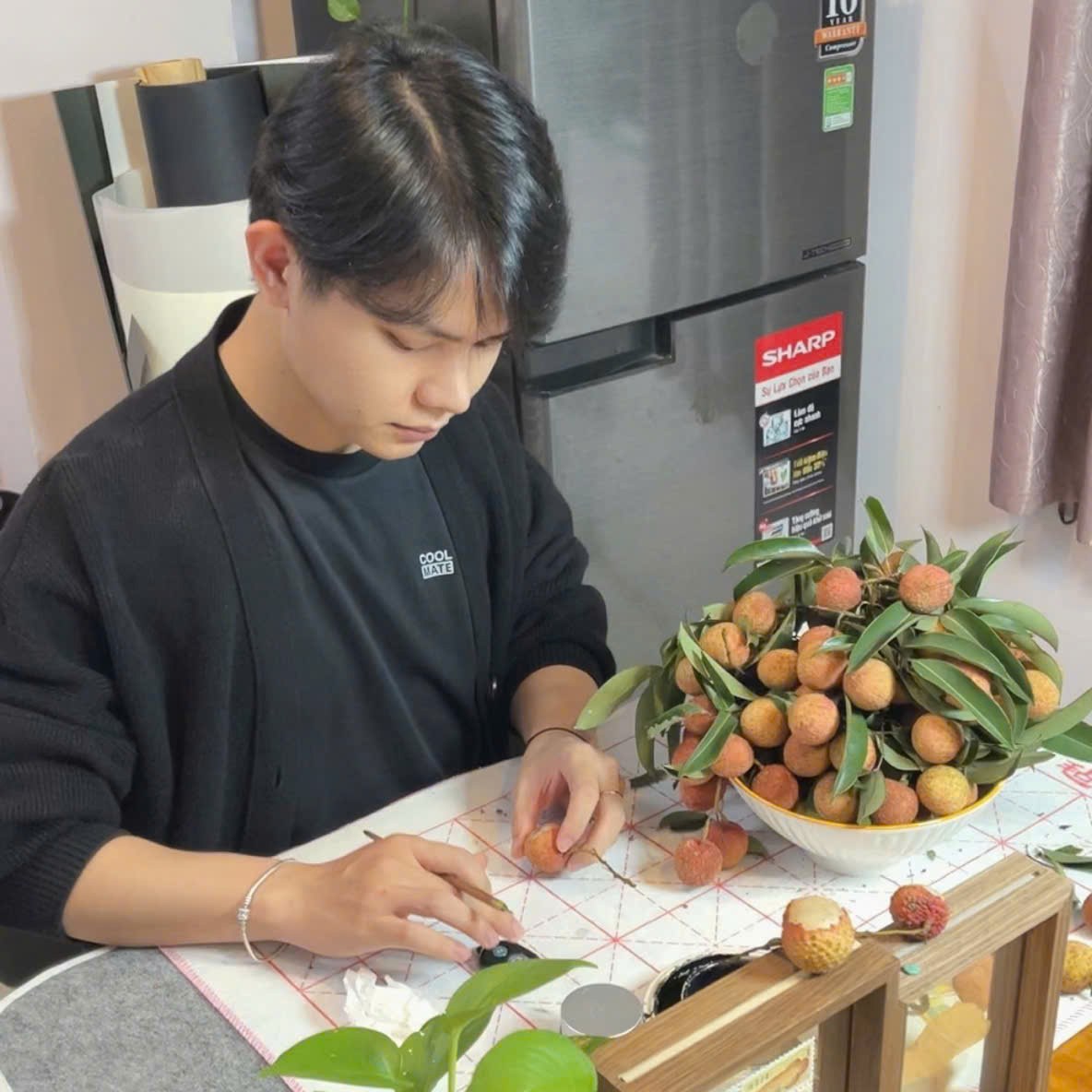
I accidentally saw a photo of the hot trend in China, which is writing calligraphy on fabric. I think I can also base on that idea and express it in Vietnamese in the style of writing the Chinese characters, said Mr. Viet Ut.
The natural feature of the fabric is that the outer shell surface is very rough, requiring peeling off the rough shell, keeping the soft, smooth silk shell to suit the writing process.
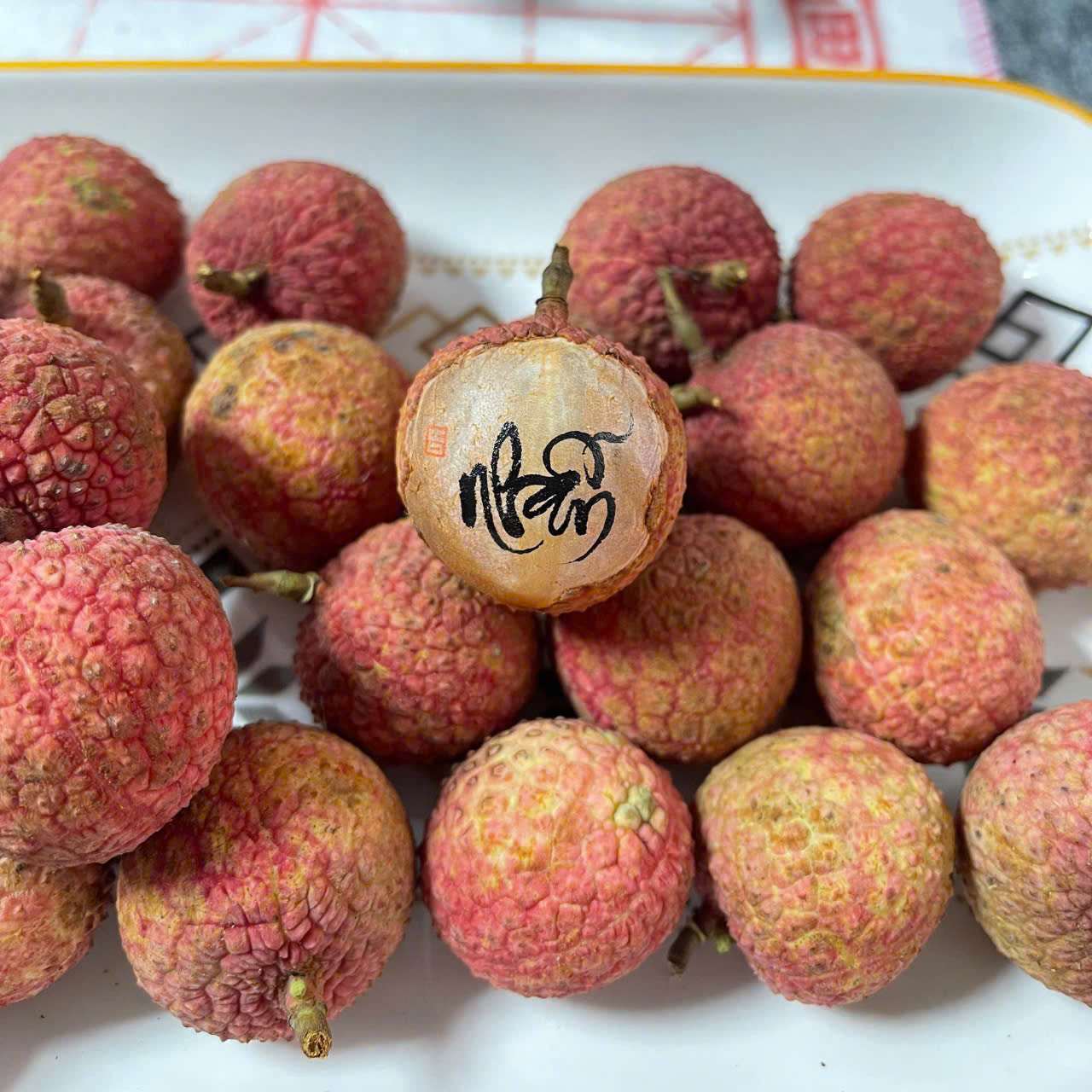
Mr. Viet Ut shared that peeling to keep the silk shell of the fabric intact evokes the childhood memories of many people every time the fabric is ripe. This added joy and meaning to the process of making his unique calligraphy work on each fabric.
The fabric chosen for the calligraphy is fresh, plump berries. You can choose the red or ripe fruit depending on your needs, whether you need a brown or white amber silk foundation.
When peeling the rough skin, use your hands gently and skillfully to ensure the silk layer remains intact. When peeling, create a writing area and then meticulously separate the strands on the peel.
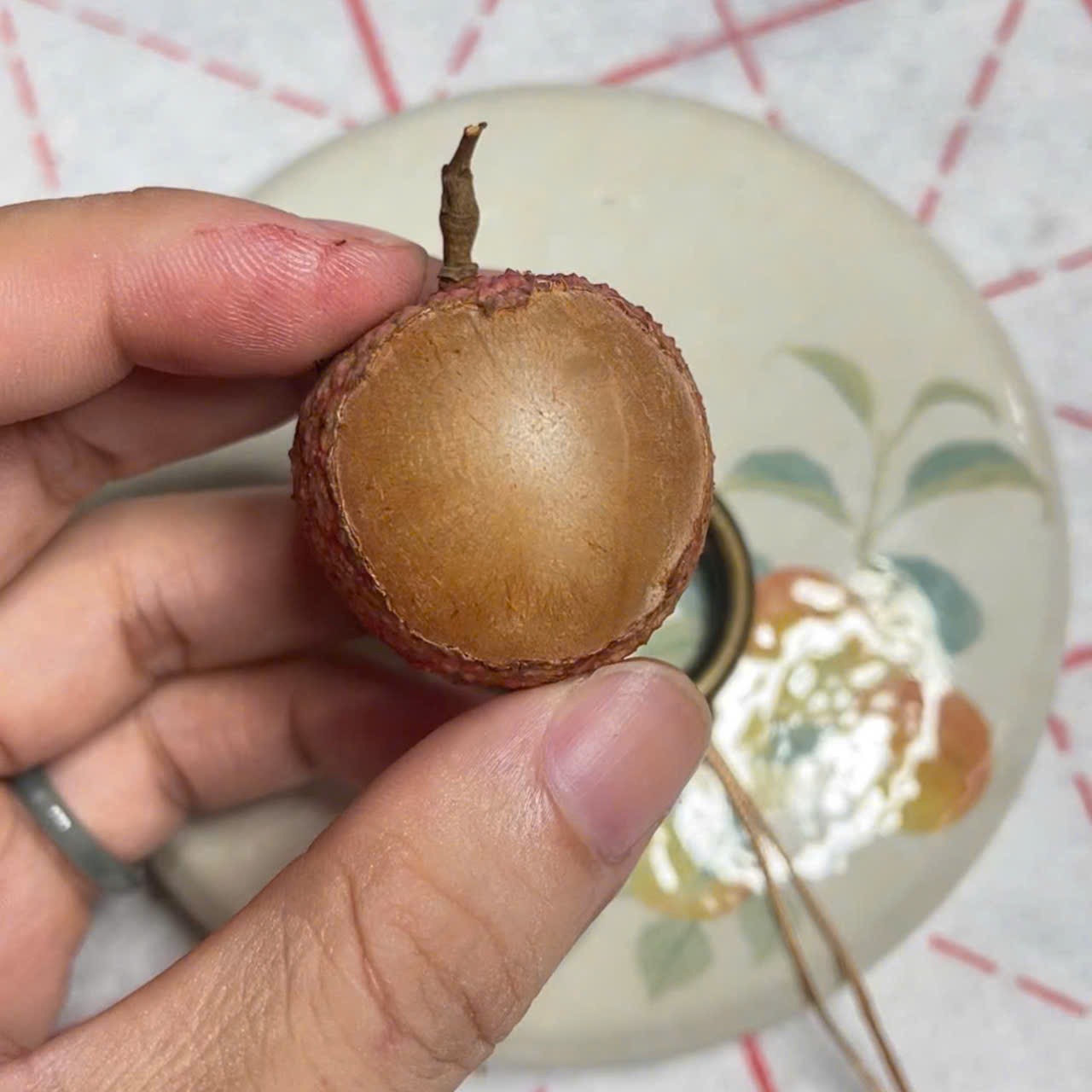
If you want to make the silk shell of the same color, you need to use a piece of cleanser that lightly absorbs the water and massages the entire silk shell surface so that the plastic film can dye the silk layer to light brown like amber. When rubbing like that, the remaining shell threads are also taken away, said Mr. Viet Ut.
wait until the silk shell is dry and creates tension for the surface before starting to write. When writing, move slowly so that the brush stroke is even and the ink has time to penetrate the silk shell. Initially, take a moderate amount of squid to shape the features, then fine-tune it to make it more sophisticated.
"Using a seaweed on a silk shell is difficult because it is quite thin and you have to wait for the silk shell to dry before writing. To fix this problem, we can replace it with Acrylic color, Mr. Viet Ut shared his experience after a few times of writing with a thick text.
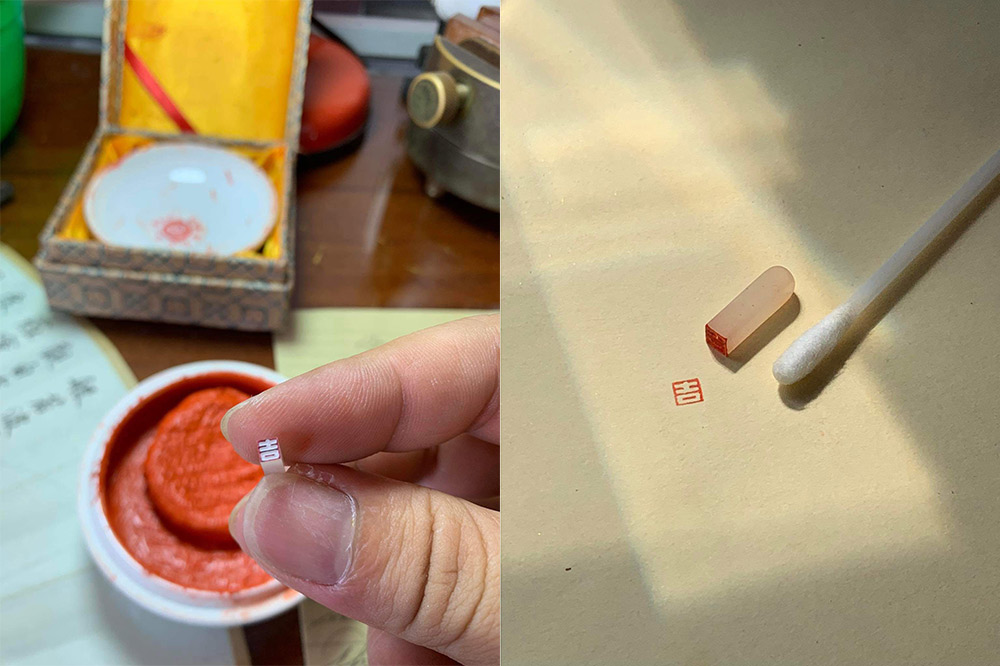
The words he chose to write on the fabric are often short, educational and philosophical: ring, fasting, heart, peace, bottle... The final step is to stamp the silk shell. This is a step that requires a smooth combination of hand force: if too light, the channel does not stick to the silk shell, if too strong, the silk shell is easily torn.
The result after two hours of cramming each fabric is a calligraphy with black squid floating on the amber silk shell, with depth, distributed cubic shape and smooth texture. The meticulous and elaborate handwriting photos on fabric by Mr. Viet Ut spread a traditional and creative image between the Vietnamese handwriting subject and the lyrical fabric - a Vietnamese specialty.
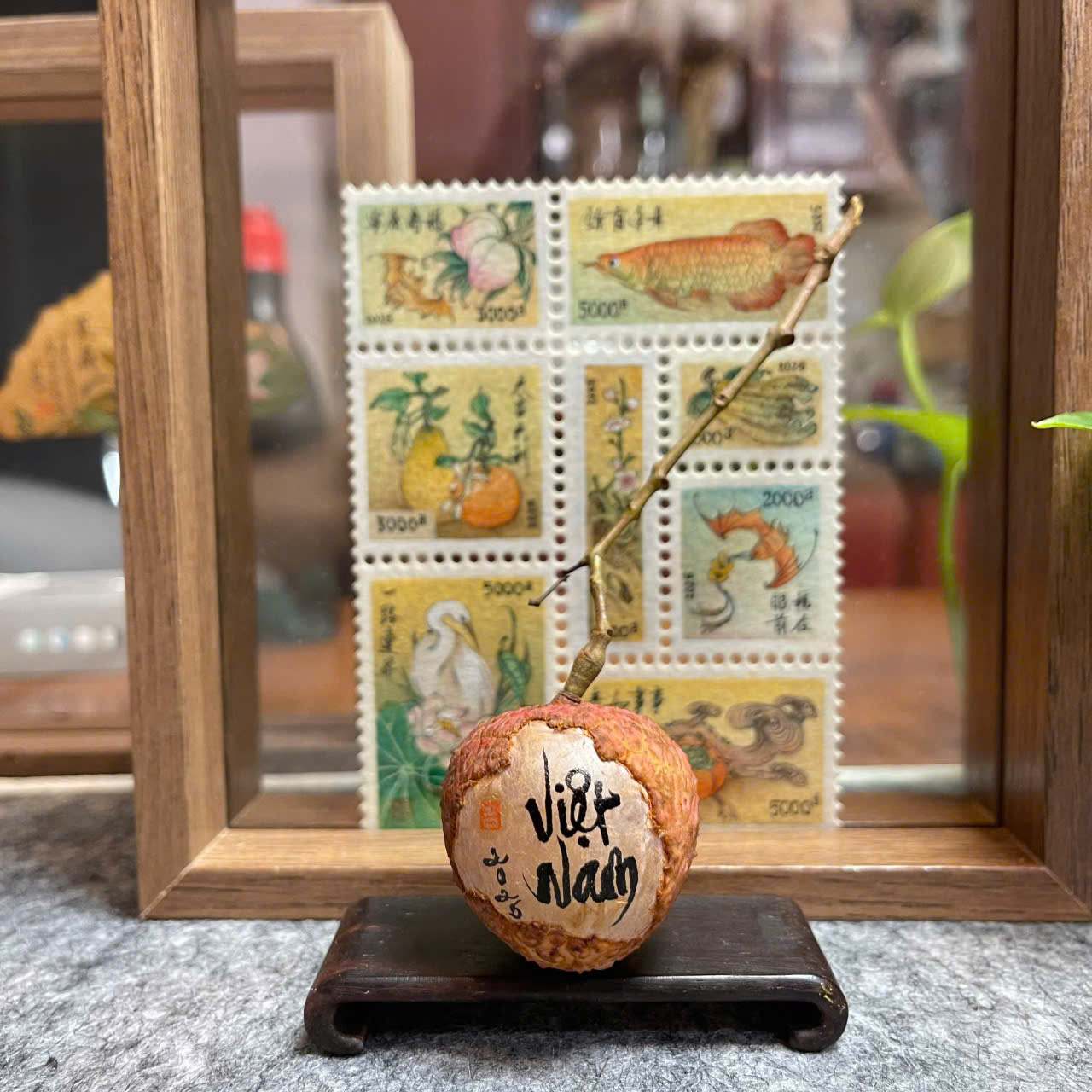
Due to the material characteristics, the calligraphy work on the fabric cannot be preserved for long, if displayed naturally, the silk layer will tear up after about 2-3 hours due to the loss of the hard protective crust.
"If the silk surface is continuously moisturized, it will last a day," said Mr. Viet Ut.
This young man noted that you should not eat fabric that has been written and painted with ink.

